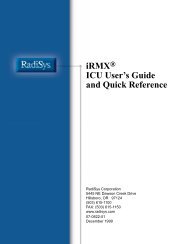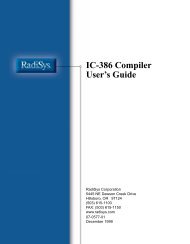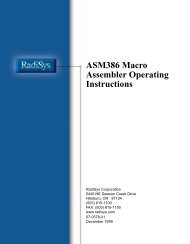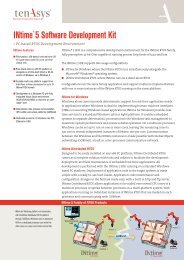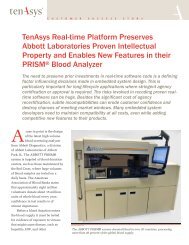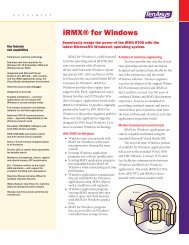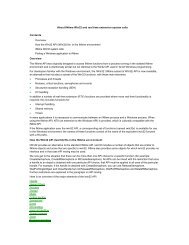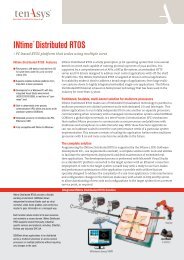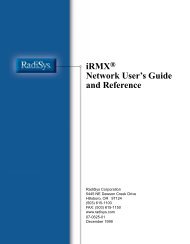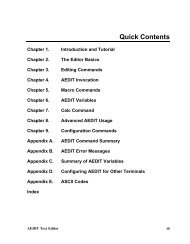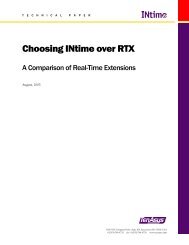INtime® 3.1 Software - tenAsys
INtime® 3.1 Software - tenAsys
INtime® 3.1 Software - tenAsys
Create successful ePaper yourself
Turn your PDF publications into a flip-book with our unique Google optimized e-Paper software.
Chapter 4: About RT programming<br />
when you need to respond to a new interrupt. Interrupt processing is also more<br />
efficient, since your system spends all of its time running threads, not polling for<br />
interrupts.<br />
Determinism<br />
INtime software provides deterministic response by establishing a predictable,<br />
worst-case response time to a high-priority interrupt. Deterministic response time<br />
includes these components:<br />
• Interrupt response time: The time that elapses between a physical interrupt and<br />
the start of interrupt handler execution. A predictable worst-case response time to<br />
interrupt processing ensures that incoming data is handled before it becomes invalid.<br />
• Thread switch time: The time that elapses between exiting one thread and starting<br />
another. To exit a thread, the RT kernel must save data registers, stack and<br />
execution pointers (the thread state) of one thread. Minimized thread switch time<br />
also provides a predictable response time to a high-priority thread.<br />
Since the typical response to an interrupt includes invoking a handler and then<br />
performing a thread switch to an interrupt thread, the deterministic response time<br />
includes both the interrupt response and thread switch times.<br />
RT response does not mean instantaneous execution. A high-priority thread that is<br />
very long and performs many calculations uses as much processor time to execute on<br />
an RT system as on any other system. The length of time instructions take to execute is<br />
a function of processor speed.<br />
43



